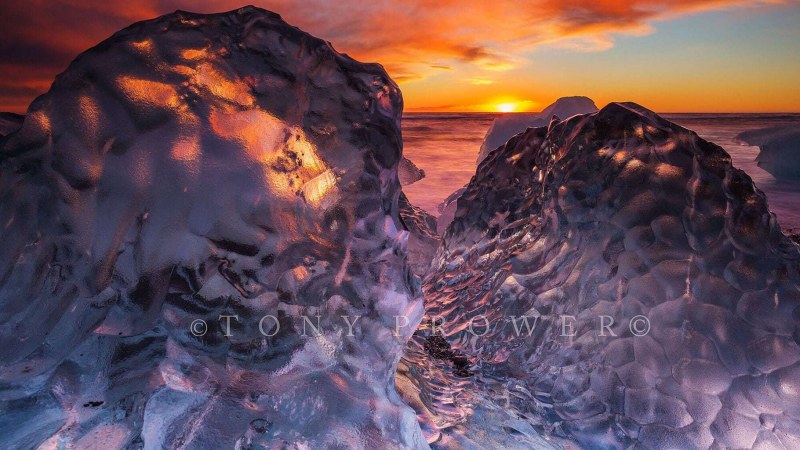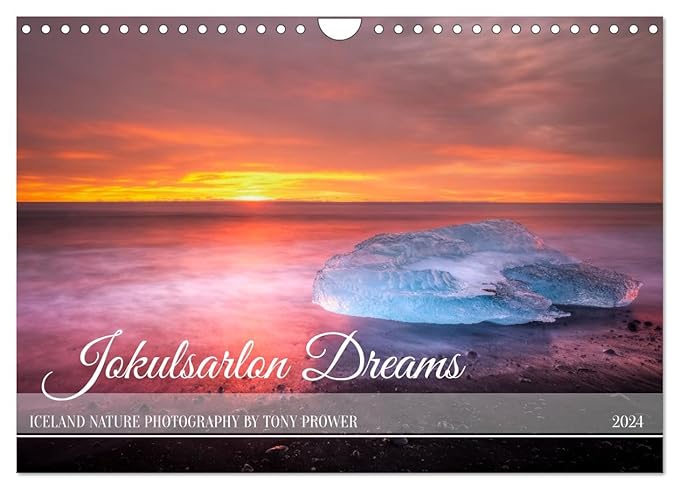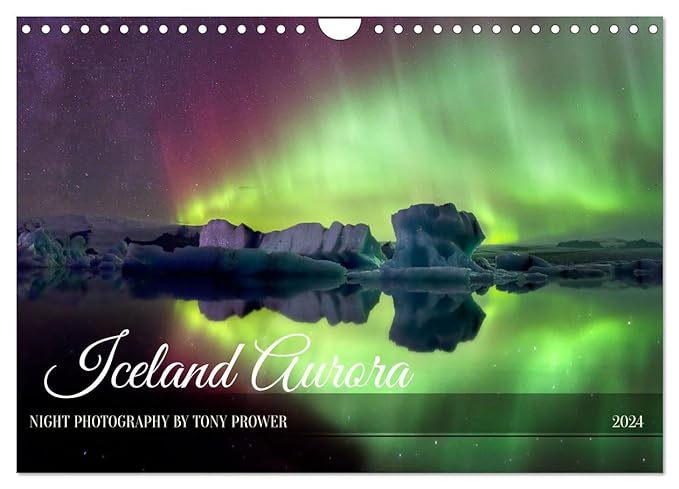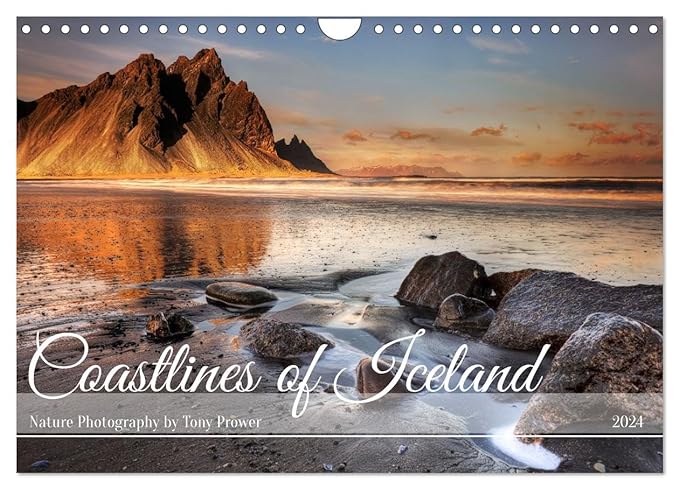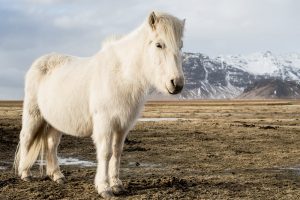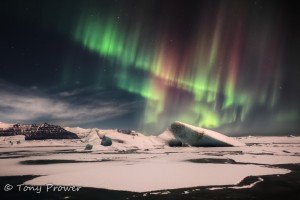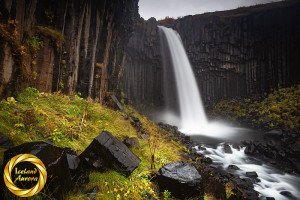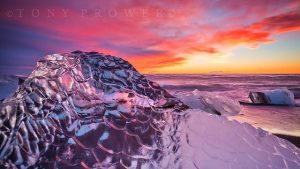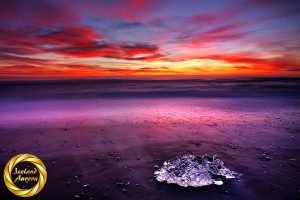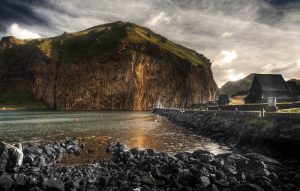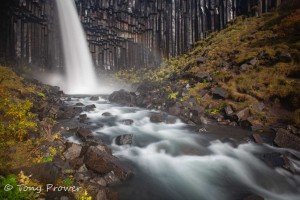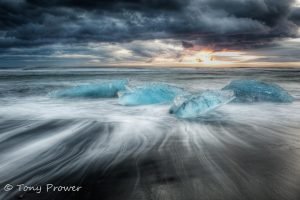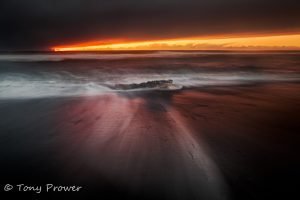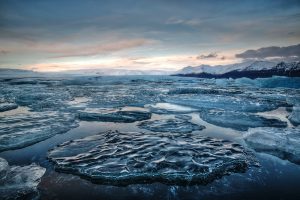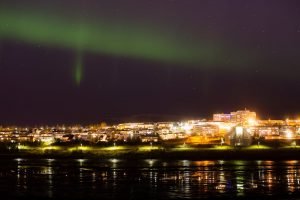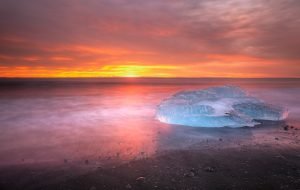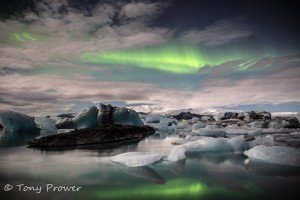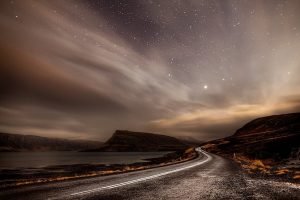Taken on January 11, 2017
Breiðarmerkursandur is the name of the beach and the “Sandur” part of the name denotes a desert, in Iceland sandur are places that have suffered heavily under volcanic ash. Indeed we were reminded of the “sand” all too often as Strong winds from the North battered the glacier ice sitting on the black sand waiting for the Ocean’s final say. This morning really was an interaction of all the elements as wind blasted sand at scalloped glacier ice and blew the tops off the Atlantic wave crests.
Camera settings
- ƒ/16
- 24 mm
- 15 seconds
- 500
Mode: AV mode with + 2 stops over (compensation +/-).
Focus: @ the f/22 hyperfocal mark. This was heavily weighted to the foreground.
Background
It was really horrible conditions that brought about this beauty. We were sand blasted and windswept on the black sand beach, day 2 of a 3 day tour. It is this weathering that makes such beautiful sculptures on the beach. It is the cloud of sand in the Southern sky that is extending our sunrise colours this morning.
This piece of glacier ice caught my eye because the “v-shape” gave it extra depth and there was warm light refracting through the thinner parts. The “v-shape” also acts as a frame – it frames the Ocean.
Composition
Because of the depth opportunities presented with this particular piece of ice, I had to get fairly close (my lens is about 20 cm from the ice). This meant using only 2 legs of my tripod and leaning the head against the ice chunk (like my previous image focus). Then I had a idea to shoot it with different apertures to show how aperture affects the sense of depth.
In my composition I wanted the “v-shape” to be balanced, kind of framing the central part of the ocean. I wanted to show the warm colours coming through the thin ice, so height adjustment was essential. I have overlapped the horizon 3 times with heads of ice, and these heads is overlap each other. This is a very strong depth cue.
Magic Cloth
Long exposure = 15 seconds.
Fifteen seconds gives me some room to play a little. My exposure challenges here are the darker ice at the bottom of the scene, very little light is getting through this thick glacial ice. At the top of the scene I have a fantastic colour sky, so I don’t really want to loose any potential there. Overlapping the sky is a header of thinner glacier ice that is allowing warm light through. This is going to be my main compromise, this piece of ice will have to have the same exposure as the sky (1 second). I can angle the cloth slightly to expose a little more, but I am not going to compromise that sky for anything ambitious. I don’t want to sacrifice and of those deep reds for the sake of a few Magic Cloth tricks.
The movement was a karate chop after a 1 second sky exposure. Then a very slow movement up towards the horizon (around 5 seconds). Then quickly back down and working the bottom corners for the remaining seconds.
You can see in the photo how the ice close to and above the horizon has received just a 1 second exposure (the same as the sky). These pieces of ice have more black than the rest of the ice (that was actually darker in reality). In post-processing, I have tried to redress the balance.
Variations
As the sun rose, I stopped to f/22 to achieve a more pronounced sun-star. The blades of the aperture mechanism dictate the shape of the sun-star.
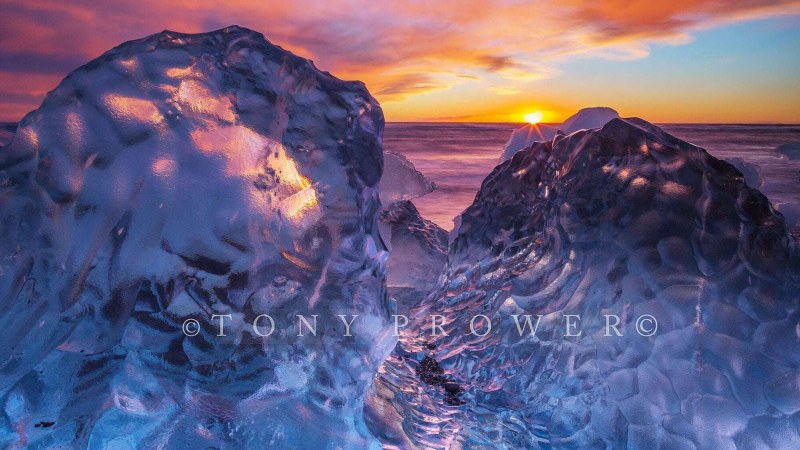
Can you see how the sense of depth is not so strong at f/22 ? There is no variation in sharpness as your eye moves through the scene because everything is in focus. You could introduce some variation in focus in post-processing just to hep a little with the communication of depth.
